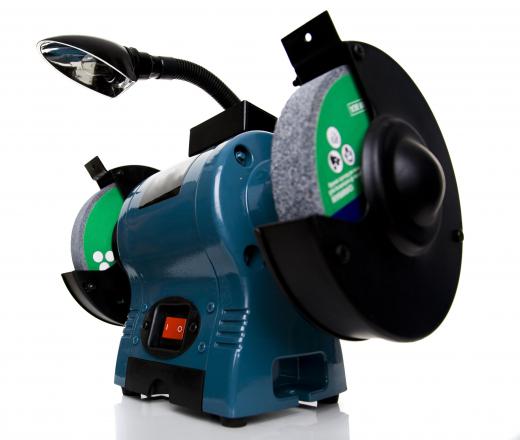A grinding wheel is an abrasive tool used to cut a material or polish a surface. It typically consists of a steel or aluminum disc, with a rough finish that is made up of particles held together with a gluing or bonding agent. There are many different types, sizes, and grades of grinding wheels. Common wheel types include straight, tapered, and cut-off, but there are many others available as well.
The type of material and size of particles used generally determines the abrasiveness of the surface, and cutting action of the grinding wheel. The most common families of materials used for the abrasive particles are silicon carbide and diamond. There are many variants of these abrasive materials, like ceramic aluminum oxide and boron carbide, for example.

Selecting the right grinding wheel for a specific application is primarily determined by the hardness of the material being cut. The abrasive material, bonding agent, density, grade, and grain-size are all also key considerations. The physical size of the abrasive particles, known as grain-size, will affect the cutting performance of the grinding wheel. A fine grain will remove less material, and is normally used for polishing and to achieve a fine surface finish. A large grain-size will cut material quickly, but create a rough surface finish.
A general purpose grinding wheel is normally used for a finite period time and then discarded and replaced. A more expensive wheel that is used for precision grinding work is usually dressed and trued, or calibrated, after a period of use, to ensure its performance is maintained and usable life extended. Dressing the wheel exposes fresh abrasive material, and 'truing' ensures the grinding wheel surface is parallel to the material or object being ground.
A grinding wheel is most often used in a grinder, which is a machine specifically designed for mounting and rotating the wheel at very high speeds. Grinders come in many different sizes — from small, tabletop or bench units used in home workshops to very large, industrial units used in machine shops and the manufacturing industry. Smaller diameter grinding wheels can also be purchased for use with power drills, to allow portability when an object cannot be taken to a grinding machine.
Before selecting a grinding wheel, it is advisable to consult a person with expertise in choosing the right wheel for a specific application. One rotates at very high speeds and, therefore, use of appropriate personal protective equipment, like a face shield and non-flammable clothing, as well as having familiarity with the grinder equipment itself is extremely important.
